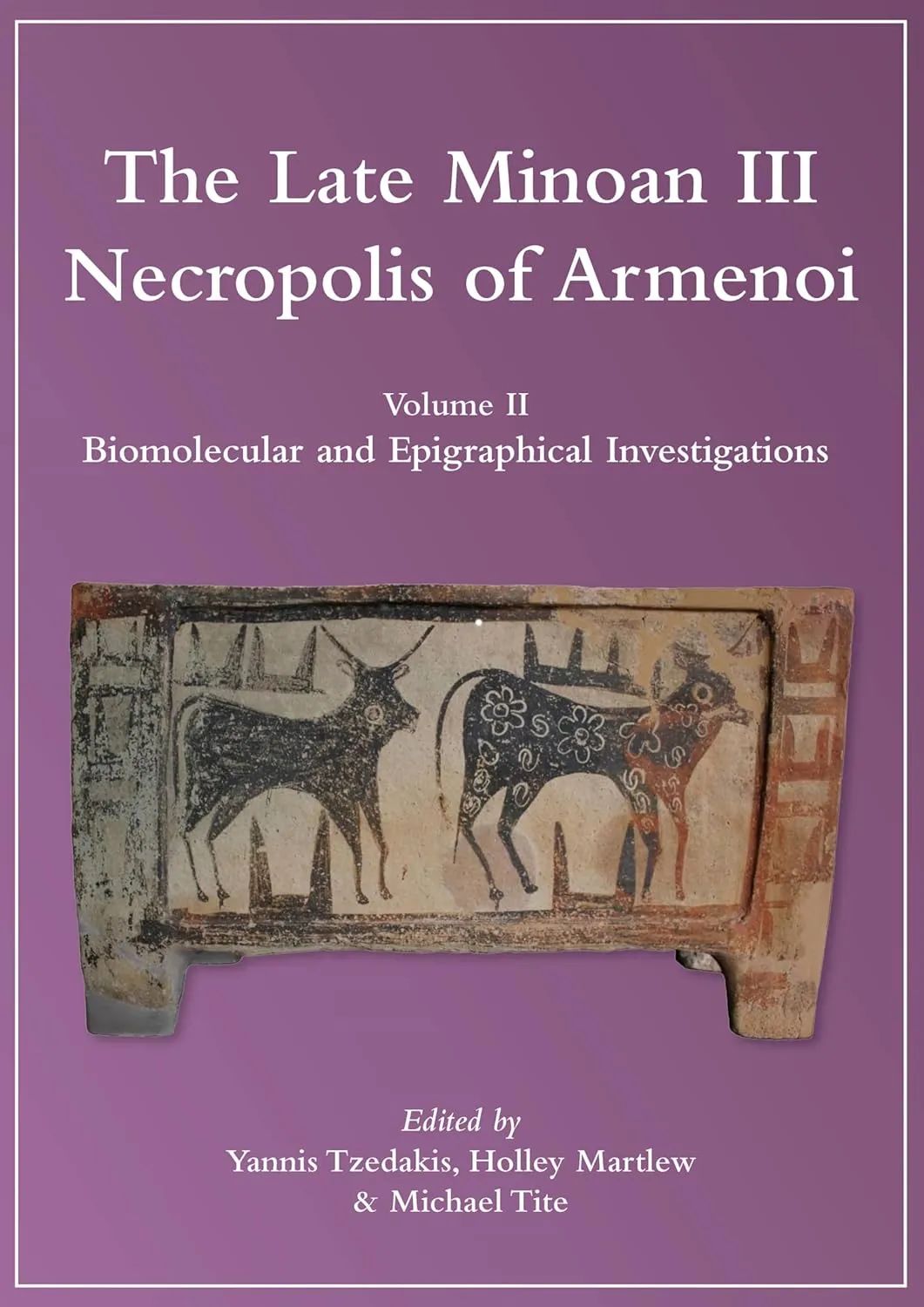书籍资料库
米诺斯三世晚期阿尔梅诺伊墓地:第二卷 - 生物分子和金石学研究
The Late Minoan III Necropolis of Armenoi
Volume II - Biomolecular and Epigraphical Investigations

Edited by Yannis Tzedakis, Holley Martlew and Michael Tite
Imprint: Oxbow Books
144 Pages, 216 x 280 mm, 120 b/w illustrations
£39.95
Paperback
9798888570463
February 2024
DESCRIPTION
This is the first volume on the Late Minoan III necropolis of Armenoi in western Crete. It sets the scene, introduces the site and its topography, and offers the results of site surveys and their finds.
The Late Minoan III Necropolis of Armenoi, Crete (ca. 1390–1190 BC) is the only intact, complete Late Minoan necropolis presently known, of which 232 tombs have been excavated. The research project was the first large-scale genomic sampling of skeletal material from a single site in Bronze Age Greece, as well as being the first time a multi-disciplinary approach with ancient DNA as its focus has been conducted on a large, well-curated necropolis assemblage. As such it provides a unique opportunity to answer archaeological questions, the most important of which are kinship, an analysis of the origin and ancestry of those buried in the tombs, the homogeneity of the population or otherwise, and diet. The analysis program was only possible because the tombs had not been seriously disturbed, and human skeletal remains had survived and been expertly conserved. The results of ancient DNA, stable isotope analysis, osteological analysis, and radiocarbon dating are presented, providing the first detailed record of ancestry and kinship in this iconic period of Eastern Mediterranean prehistory.
In addition, the long-debated problem of the location of the wealthy city of da-*22-to, referred to many times in the Linear B tablets, is addressed and key evidence is presented. The rich finds in the Necropolis, the town excavation, and in the environs, support the interpretation that the ‘city’ that built the Necropolis is da-*22-to.
CONTENTS
Figures and Tables
Conventions and Abbreviations
Chronology
Acknowledgements
Map of Site
1. Introduction
2. The Archaeology of the Late Minoan III Necropolis of Armenoi: an Introduction
3. The Bioarchaeological Analysis of Human and Faunal Skeletal Remains
4. Multi-isotopic Measurements of Human Remains at the Late Minoan III Necropolis of Armenoi
5. The Archaeological Significance of the DNA and Stable Isotope Results
6. The Identification of da-*22-to
7. The Archaeological Evidence which Supports the Identification of the Late Minoan III City of Armenoi as da-*22-to
PRAISE
“The sophistication of the tombs and the material culture discovered at the necropolis attests to the existence during that period of centers outside Knossos and underlines the level of complexity such settlements had achieved. More importantly, it enriches our knowledge on the political and social structure of western Minoan Crete during the period before and after the decline of Knossos and the way the fall of the main political center and the Mycenaean peace that followed seem to have favoured the re-emergence of old centers.” ~Bryn Mawr Classical Review
https://www.oxbowbooks.com/9798888570463/the-late-minoan-iii-necropolis-of-armenoi/
